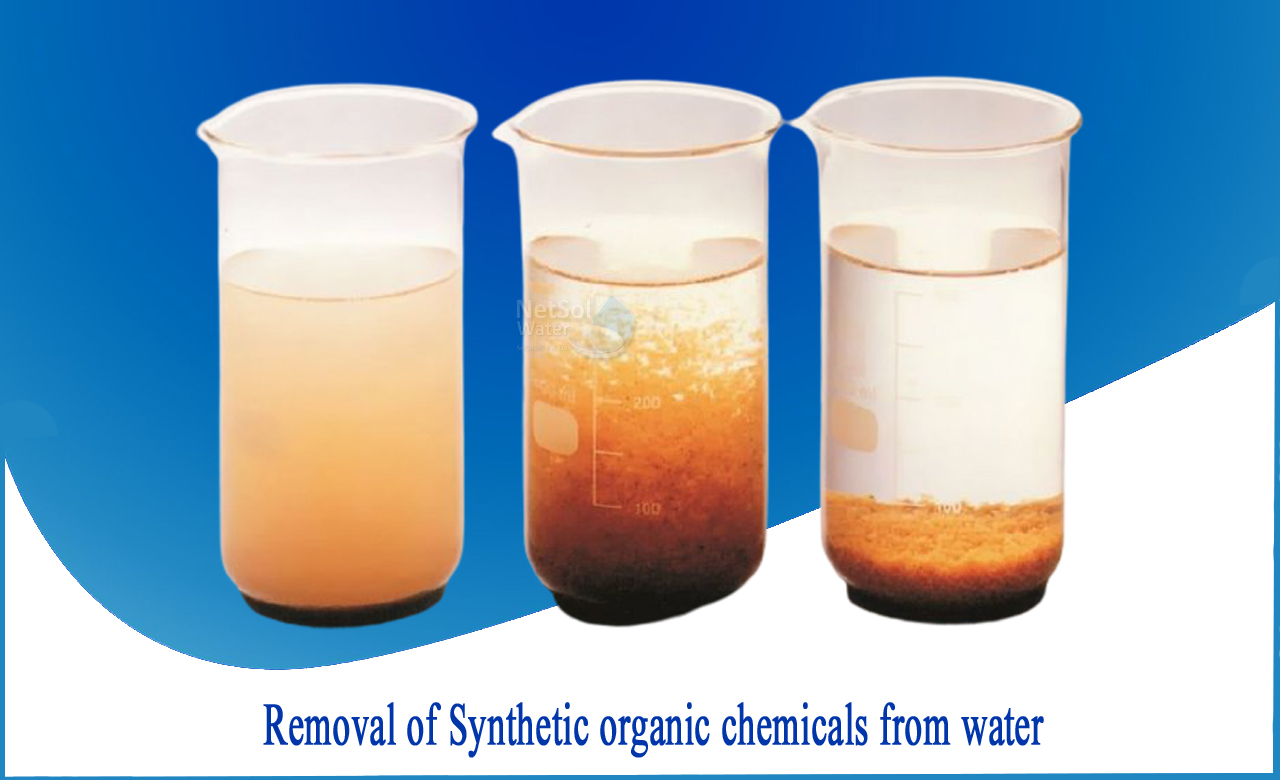INTRODUCTION
Some small drinking water systems have raw water contamination from natural or synthetic organic chemicals (SOCs). Natural organic materials, particularly from surface water sources, may be present in water supplies. Dissolved organics in a community's drinking water may cause taste, odour, or colour issues, resulting in consumer complaints. Leaking underground gasoline/storage tanks, agricultural runoff containing herbicides or pesticides, solid waste or hazardous waste landfills, and improperly disposed chemical waste are all sources of SOCs.Granular activated carbon (GAC) and aeration are the best technologies for organic contaminant removal in drinking water systems.
SOURCE OF ORGANIC CHEMICALS IN WATER
Pesticides and herbicides (synthetic organic chemicals), disinfection by-products (DBPs), polychlorinated biphenyls (PCBs), industrial chemicals, and pharmaceuticals are examples of organic chemical contaminants. Organic pollutants can enter water supplies through contamination from farm run-off, landfills, factories, spills, and improper disposal.
HEALTH EFFECTS OF USING ORGANIC CHEMICALS
The type of chemical contaminant, the concentration of the chemical in the water, the sensitivity of the individual consuming the water, and the period of exposure (days, months, years) to the contaminated water supply all influence health risks. Many organic compounds are thought to be carcinogens.
HOW TO REMOVE ORGANIC CHEMICALS?
Adsorption of granular activated carbon (GAC) is an effective treatment technology for removing synthetic organic chemicals (SOCs) from drinking water supplies. If not properly designed, this treatment process can be costly. The use of mathematical models is an appealing method for assessing the impact of process variables on process design and performance.
HOW DOES NETSOL HELPS IN REMOVING SYNTHETIC ORGANIC CHEMICALS?
Water supplies can become contaminated with synthetic organic chemicals (SOCs) from agricultural runoff or commercial and industrial sources, such as the leaking underground storage tank. These chemicals can be removed by running the water through a column of NETSOL activated carbon. The carbon granules strongly attract organic chemicals, allowing them to be removed from the water via a process known as adsorption. When the carbon is full and can no longer hold any more chemical, it is removed from the column, heated to burn off contaminants, and re-used.
WHAT IS NETSOL ACTIVATED CARBON TREATMENT?
NETSOL Activated carbon is carbon that has been subjected to extremely high temperatures, resulting in a massive network of internal pores. Granular and powdered activated carbon have been widely used in drinking water treatment.
Powdered activated carbon (PAC), which is commonly used to control taste and odour, is added directly to raw water and removed by settling in sedimentation basins. GAC removes many organic contaminants from water supplies, as well as taste and odour.
PERFORMANCE OF THIS TREATMENT
Organics that are readily absorbed by activated carbon include:
· aromatic solvents (benzene, toluene, nitrobenzenes);
· chlorinated aromatics (PCBs, chlorobenzenes);
· chloroaphthalene;
· phenol and chlorophenols;
· polynuclear aromatics (acenaphthene, benzopyrenes);
· pesticides and herbicides (DDT, aldrin, chlordane, heptachlor);
· chlorinated aliphatic (carbon tetrachloride,chloroalkyl ethers); and
· High molecular weight hydrocarbons (dyes, gasoline,amines, humics).
Netsol Water is Greater Noida-based leading water & wastewater treatment plant manufacturer. We are industry's most demanding company based on client review and work quality. We are known as best commercial RO plant manufacturer, industrial RO plant manufacturer, sewage treatment plant manufacturer, and effluent treatment plant manufacturers. Apart from this 24x7 customer support is our USP. Call on +91-9650608473, or write us at enquiry@netsolwater.com for any support, inquiry or product-purchase related query.



